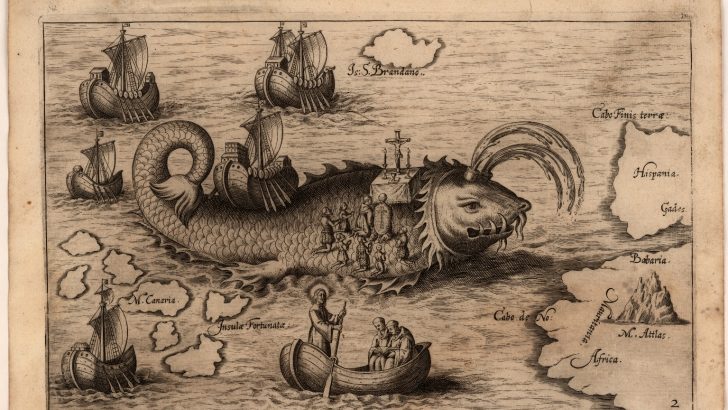The World of Books by the Books Editor
The Piri Re’is is an early 16th Century Ottoman map, which has attracted a great deal of interest, of all kinds, since it was rediscovered in Istanbul’s Topkapi Museum in 1929. Named for the admiral who had it made, it shows the coasts of the Atlantic and South America a mere 20 years after the voyages of Columbus.
The map is, all cartographers agree, a very remarkable example of Ottoman cartography, and a fascinating record of Islamic geography, a science which had been developed much earlier in the middle ages.
According to an inscription on it, the map was completed in the autumn of 1513, but only a third of the original whole now survives in the Topkapi. It was claimed by the admiral to be based on earlier sources, some ten Muslim maps and four Indian maps.
But its historical importance is not what ought to interest us here in Ireland
At the top left corner of the parchment (upside down as the map is usually displayed) there is a remarkable illustration. This shows St Brendan, no less, and his companions hove-to beside the great fish Jasconius, on whose back, as on an island (according to the original Irish legend), they were wont to celebrate mass every Easter.
Now images of St Brendan and his island are commonplace in the middle ages, given the large number of manuscripts of the Voyage of St Brendan that were in circulation then – it was the maritime romance of Europe par excellence.
But the drawing on the Piri Re’is map is unusual. It shows two half naked sailors on the back of the whale lighting a fire, which will wake the sleeping beast, which will the dive down leaving them to save themselves.
The ship is in the style of not of Brendan’s day, but the 15th Century. That might have been expected. What is surprising is that Brendan and his two (representative) companions are dressed in distinctive pointed black hoods.
Their image is inspired by the Christian clergy that the Muslim map makers were familiar with, the Coptic monks of Egypt. They are very like the Egyptian monks of today in the desert monasteries of that country.
This black hood is popularly called a qalansuwa in Arabic; by the Christians themselves it is officially called a koulla, a Coptic word that is wide-spread in the Middle East. This passage through German and Old English is our modern word cowl.
It is understandable that the boat should be in the 16th Century style, but I have come to think that we should be less surprised that St Brendan and his monastic family were show in Egyptian robes.
Quirk
This artistic quirk reminds us that the monastic life of early Christian Ireland came, by devious ways from Egypt. Though St Patrick is thought to have introduced bishops into Ireland, very quickly these became secondary figures to the great abbots of the large and powerful monasteries in the medieval centuries that followed.
The monastic life of early Christian Ireland, centred as it so often was on the search for a “desert” in the remote reaches of both land and sea, was directly inspired by Egyptian monasticism.
It was not until the 1111 Synod of Ráth Breasail, in a series of reforms which were strongly continued under the Normans, established the outlines of modern diocese and parishes, along continental lines.
These had emerged from the Roman area of administration, and were very different in their form than those that had once prevailed in Egypt.
However, this reminds us too, in these days of change, that once upon a time what we take to be the essential structure of the church did not really exist in Ireland.
The faith was based on religious communities and their surrounding lay neighbours.
Perhaps something like this will be the future form of the Catholic Church. But it would not be a novelty, some think, but a return to Apostolic foundations.


 Peter Costello
Peter Costello St Brendan and the whale
St Brendan and the whale 
